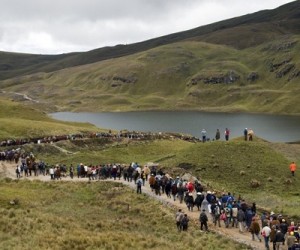Peru's Minister of Energy and Mines Jorge Merino announced the country is expected to attract mining investment projects worth $10 billion in 2013.
The country’s extractive sector, which accounts for some 60% of the economy, is expected to bring $53 billion in future investment over the next decade.
Currently, América Economía reports , Merino said there is about $18,000 worth in projects underway. He added that major mining projects such as Antapacay, Las Bambas and Toromocho are currently carried out and Constancia project will soon start its operations.
But negative reactions to mining projects are not unusual in Peru and they might jeopardize the minister's bullish forecast.
Large-scale protests against exploration and extraction activities have swept the country in recent years, making of social conflicts the main risk for investors in the local industry.
Peru’s mining, oil and energy society (SNMPE) said in early September that, as a result of almost a year of non-stop anti-mining protests in different regions of Peru, investors have started looking for greener pastures and so mining investment in the South American nation is expected to fall 33% next year.
The delays to Newmont Mining's (NEM) controversial $4.8 billion copper-gold Conga project in the Cajamarca region is only one of the factors investors are taking into account when rethinking their portfolios. Mostly they worry over the large number of mining projects dealing with social conflicts, such as Swiss based- Xstrat's Tintaya copper mine , near Cuzco, in Southeastern Peru.
Behind Chile, Peru is the world's second biggest producer of copper and silver and a major producer of gold, zinc, lead and other minerals.



